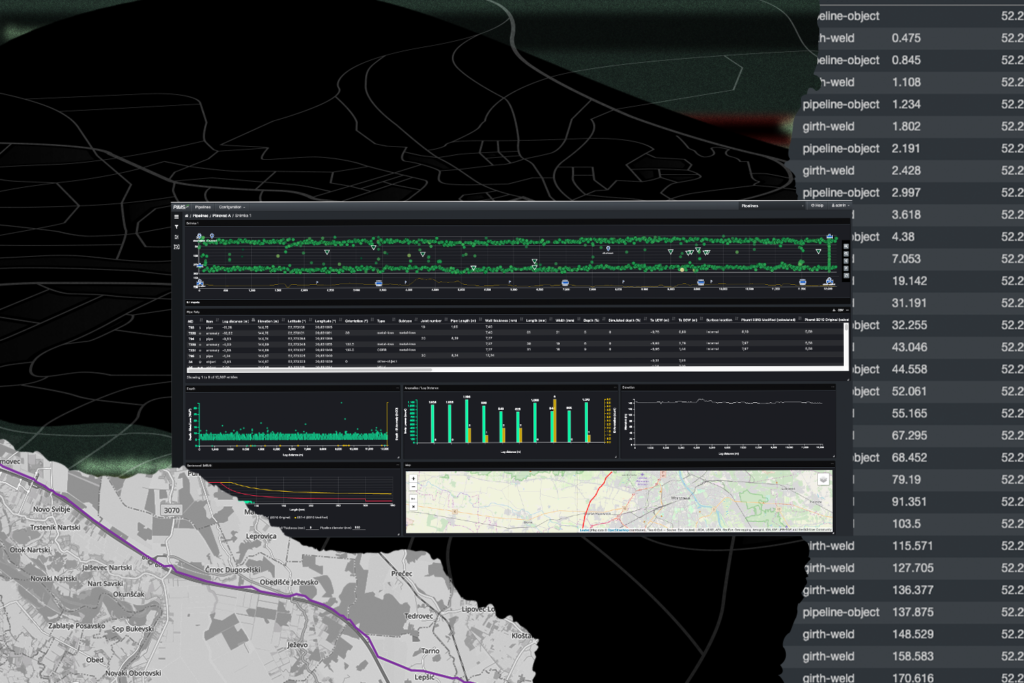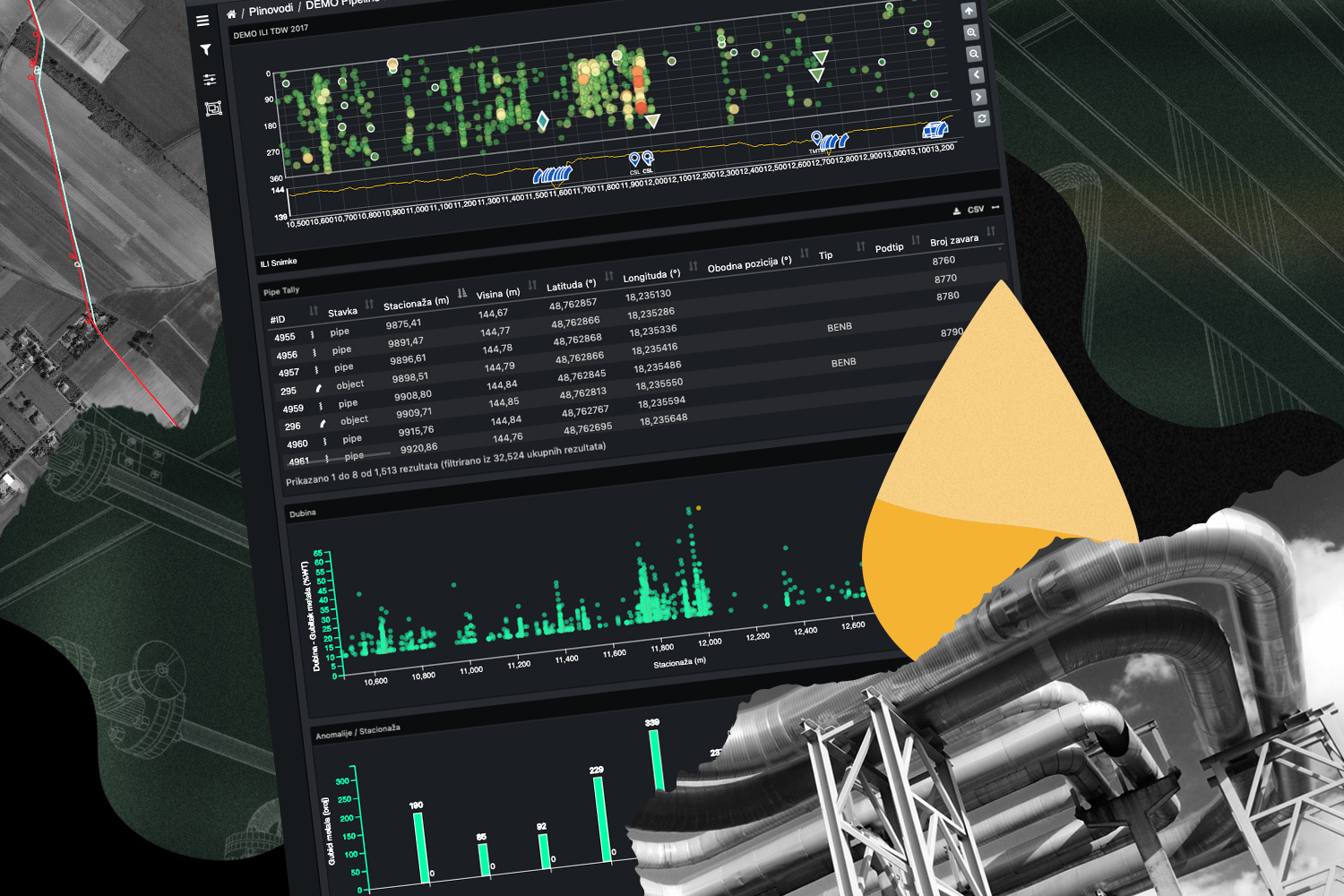The oil industry is one of the most volatile and complex sectors. The industry’s transformation is already happening – from changes in the regulations to digitalization and new technologies.
Due to a better scope of knowledge and sophisticated technological development, the economically viable and efficient production of unconventional resources has been made possible.
Software packages cover a wide range of advantages and possibilities in finding solutions for different industries and fields. When it comes to developing new technology in the oil and gas industry, software has been at the forefront.
Why should companies invest in custom software?
There are many ways a custom software application can improve the business in general and, specifically, in this industry. Most importantly, it can increase productivity, response, and intervention times, minimize expenses, make operations safer, improve asset integrity, and sustainable resource treatment.
Custom software is the best solution if you are looking for safety improvement, productivity increase, and operational excellence in the energy sector.
Companies in the oil and gas industry face large and complex equipment configurations and very complex processes with a large amount of data.
These processes require a large number of instruments to control and monitor the operation of the plant. Therefore, that is why there is a growing need for practical tools to improve the whole business process.
Generally, the oil and gas industry uses software that helps in asset, data management, and analytics. Bespoke software solutions help the oil and gas industry improve supply chain efficiency, planning processes, worksite safety, and potential risk mitigation, increase productivity, and revolutionize strategy development.
Upstream, Midstream and Downstream sectors – what is the difference?
The oil and gas industry is divided into three sectors – upstream, midstream, and downstream. The software’s purpose varies according to the specific nature of its role in the industry.
Upstream enterprises produce oil and natural gas. The upstream sector refers to anything having to do with the exploration and production of oil and natural gas. It includes exploration, drilling, development, and production phases.
Since every stage has its peculiarities and requirements, software solutions may vary according to the phase a company is involved in.
The midstream oil and natural gas industry sector refers to transportation (by pipeline, truck, rail, barge or tanker) and storing crude oil and natural gas before refined and processed into fuels.
The downstream sector is the final sector of the oil and gas industry. This includes everything involved in turning crude oil and natural gas into thousands of finished products that gas stations and households depend on every day. Some of these products that reach customers are fuels like gasoline, diesel, kerosene, jet fuels, waxes, heating oils, asphalt for roads, etc.
Mostly, oil and gas enterprises use custom software developed specifically to match the upstream, midstream or downstream sectors’ unique requirements.
Software Solution for Pipeline Inspection
The oil and gas software solutions can include artificial intelligence, electronic monitoring, big data analytics and drone technology. These are a few new technologies that will make conditions safer for the next few years for the oil and gas industry.
In collaboration with our partners, we developed and implemented Aymo(Pipeline Integrity Management System) to calculate corrosion growths and detect critical areas for which operators can schedule repair tasks.
The outcome is the successful implementation of the Aymo system into a state-owned gas transport company. It is now used by operators and engineers to streamline pipeline integrity activities and upgrade their performance.
Thanks to a platform, every operator can quickly inspect a pipeline, extract most of their data through corrosion growth simulations, detections of degradation areas, and generally maintain the pipelines’ best health.
Operators don’t have to implement their solutions or maintain data manually anymore. This lowers the risk of human error and allows for the on-time response for the pipeline’s critical areas.

Type and Importance of Oil and Gas Software
The oil and gas industry is one of the most complex industries. Although they have many technological solutions in the palm of their hand, many companies waste their valuable resources, for example, for managing paperwork.
Failing to track and quickly retrieve critical documents and records wastes time and money and leads to inefficient processes. Whether you are recovering resources, building refineries, prepping a new oilfield, or designing a pipeline, always make sure you spend your time and money growing your business.
The main obstacles that the oil and gas industry face are rising operating costs and global prices. While some things like price are impossible to influence, software solutions can optimize human and manufacturing resources and reduce costs.
In this industry, regular monitoring, safety and maintenance are essential in minimizing the industry’s dangers and price fluctuations. The development of new technology and software has allowed oil and gas companies to monitor and maintain their facilities and supplies more efficiently.
Project Management Software
In the oil industry, Project management software is used to plan, implement, manage tasks and processes, control and evaluate oil and gas projects.
The benefits it brings are numerous and include:
- Project risk assessment and monitoring throughout the project
- Resource planning leading to higher profitability and sustainable growth of the project
- Automated incident notification system with recommended actions that need to be taken
- Decisive analytics on project risks, progress and profitability
- Measuring and analyzing results
- Improving business agility while managing complex projects
- Efficient streamline processes by eliminating paperwork
Data collection software for security inspections
When it comes to safety, it is high on the list of priorities in the oil and gas industry.
The use of software for security purposes allows:
- Equipment monitoring and maintenance
- Eliminating the risk of accidents at work by monitoring employee behavior
- Monitoring of working conditions
- Protecting companies from violations of legal rules and fines
Data Entry Software
This type of software is used to replace paper forms and spreadsheets. It allows workers to enter data and send it to the office for further processing.
Data entry software provides many opportunities:
- User-friendly and intuitive interface for collecting data
- Transforming field data into reports
- Entering data using offline mode
The gas and oil industry is a complex industry that relies on accurate data, speed, and successful project management. Analytical tools enable energy companies to continuously improve their strategy and operations throughout the energy chain, including oil, gas, coal and renewable energy sources.
Business management is one of the greatest strengths of every company. Each company monitors and manages its work differently. Custom software solutions allow companies to tailor programs to their specific needs, unique processes, and priorities.
Reasons To Choose Custom Software in the Oil and Gas Industry
Oil and gas companies continually face many challenges specific to the industry.
Some of the challenges include:
- lack of visibility into complex operational processes
- the difficulties of performance improvement
- logistics complexity
- equipment life cycle management, and
- meeting environmental regulations.
All of this can be successfully solved by custom software.
The software has an increasing role in the energy business. The energy sector is becoming more and more dependent on the newest technological achievements and innovative technology solutions.
Software solutions already outrivaled hardware technology development because the software is a more cost-effective option. On the other hand, hardware needs much more time to upgrade and get more expensive.
Each of the sectors mentioned above – upstream, midstream and downstream, can be divided into narrower segments of the oil industry. The choice of software solutions for each company depends on the demands and specifics of work.
Here are some of the reasons why most oil and gas production companies use their custom software applications.
- Every company has its particular and unique workflow that can be considered only when it comes to bespoke software that fits your business’s demands and requirements.
- Each niche in the energy sector requires specific software solutions.
- Custom-made software makes it possible to set specific requirements before the development process.
Digitization is usually more common in midstream and downstream sectors. But more and more oil and gas companies nowadays decide on compatible software solutions for different business needs.
Embracing digitization and software can minimize risks and increase rapid adaptation to market needs. In conclusion, by optimizing resources, the right software can significantly help save time and money, analyze and mitigate financial risk, improve productivity and increase annual savings.
As the economy’s crucial sectors, the oil and gas industry is responsible for providing vital energy sources for vehicles, homes, buildings, machines, and many more.
With a high demand for safety and maintenance, oil and gas companies are increasingly relying on the latest technology and software to improve their operations and remain competitive on the market.
If you are looking for a customized solution for your unique goals and specific needs, contact us and find out what we can do for your business. We aim to simplify processes and modernize software applications with innovative oil and gas software solutions.
Our team has technical and industrial knowledge, experience and skills and will be pleased to answer all your questions. Let us know how we can help you digitize your energy business!
